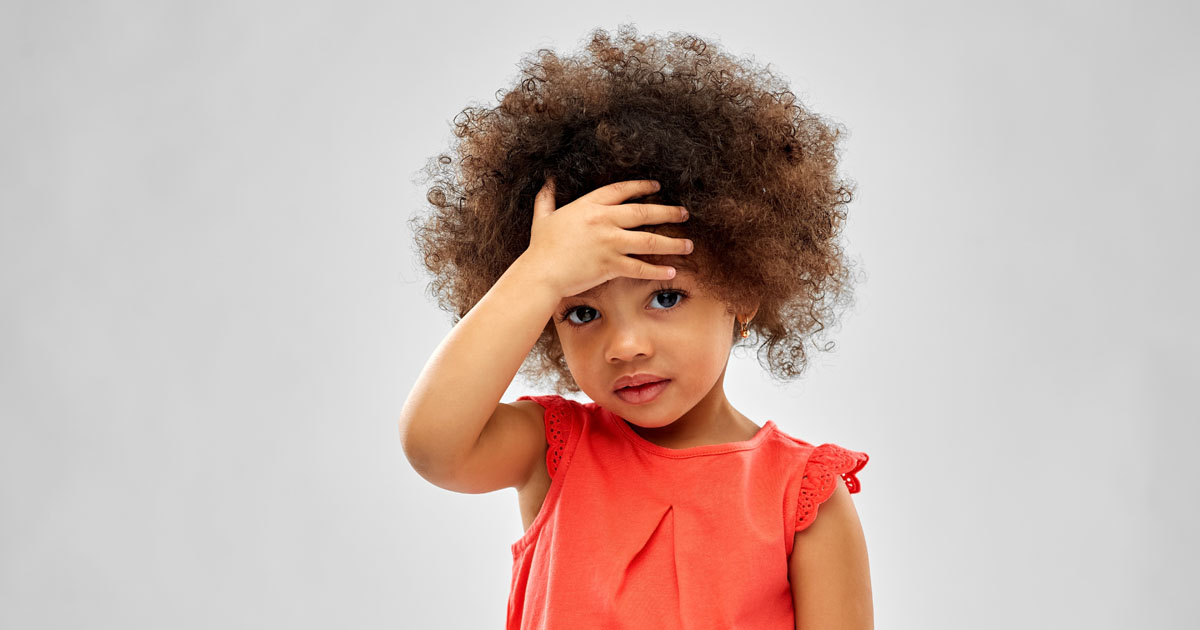Treat kids early, new migraine guideline says

The American Academy of Neurology and the American Headache Society clinical guideline for acute symptomatic treatment of migraines in children and teenagers — updated for the first time since 2004 — emphasizes importance of treating the migraine early and choosing the route of administration best suited to the characteristics of patient’s migraine attack
The guideline also recommends counseling patients on lifestyle factors that can worsen migraine pain, including avoiding triggers and medication overuse.
A growing number of studies and available treatments for migraine prompted the update, guideline co-author Andrew D. Hershey MD, PhD, FAAN, FAHS told Healio Primary Care.
To update the guidance, Hershey and colleagues systematically reviewed studies published between 2003 and 2017. Based on the strength of the evidence and other factors, they assigned “levels of obligation” to each recommendation — A, B, C, U and R — using a modified Delphi technique.
Treat early, treat symptoms
“Migraine treatment should aim to achieve fast, complete pain relief, with minimum side effects,” the guideline states, adding that treatment should begin when the pain is still mild, which offers the best chance for pain relief.
The authors also wrote that treatment should be based on patient’s symptoms, and that there are inconsistent levels of evidence for therapeutic agents.

For example, there is low or very low confidence in the evidence to support the efficacy of acetaminophen and ibuprofen for pain relief in both teens and adolescents vs. placebo. The confidence in using triptans in teenagers for pain relief varied when compared to placebo. There was high confidence that teens who receive oral sumatriptan/naproxen or the nasal spray zolmitriptan are more likely to be headache-free at 2 hours than those who receive placebo.
The guideline also stated that although there were no acute treatments that were effective for migraine-related nausea or vomiting, there was moderate evidence to suggest some triptans were effective for migraine-related photophobia and phonophobia vs. placebo.

Ann Pakalnis, MD, a pediatric neurologist at Nationwide Children’s Hospital in Columbus, Ohio, who was not affiliated with the guideline’s development, said the placebo effect is mentioned sparingly in the guideline.
“This phenomenon is very high in pediatric migraine research studies, thus the significance of it is very important,” she told Healio Primary Care.
In addition, “most of the information mentioned in the guideline discusses treating adolescent headaches, not younger children,” Pakalnis continued. “Only one of the triptans — rizatriptan — is approved for children 6 years of age and older.”
“Both of these issues — high placebo rate due to expectation response and lack of younger children — were addressed in the review and were the recommendation of additional studies suggested,” Hershey said in response.
Lifestyle counseling ‘definitely’ needed
The authors wrote that clinicians should advise children and their families about “migraine-healthy habits.”
“This includes things like getting a good night’s sleep, regular mealtimes, good hydration, minimizing caffeine, regular exercise and maintaining a healthy weight,” Pakalnis said.
Such factors “definitely need [consideration] when treating children with migraine,” she added.
According to the guideline, clinicians should discuss with their patients ways to identify and treat migraine triggers; determine factors that aggravate the condition; avoid medication overuse and work with their patients to develop an individualized treatment plan. These discussions all received “B” levels of obligation. The recommendation that patients and their families keep a headache diary to monitor treatment responses received a “C” level of obligation.

Missed opportunities?
Pakalnis said that although the guideline was “helpful,” it did not provide a full picture of how pediatric migraine should be treated.
“[Migraine] management [also] involves an individualized treatment plan [that also consists of] naturalistic therapies, such as magnesium and riboflavin, and psychological interventions such as biofeedback and cognitive behavioral therapy are important,” she added.
Hershey, who is the endowed chair and director of neurology and director of The Headache Center at Cincinnati Children’s Hospital, said the next version of the pediatric migraine treatment guidelines may contain more information on pharmacological treatments.
“There are a group of pharmaceutical agents that have been demonstrated to be effective in adults. Some have yet to be tested in children and adolescents. As these new agents and agents in development are studied, this should further improve our treatment options,” he said in the interview.
The American Academy of Neurology and the American Headache Society also recently updated their pediatric migraine prevention guideline. Click here to read that story. – by Janel Miller
Disclosures: Pakalnis reports no relevant financial disclosures. Hershey reports numerous ties to medical societies, pharmaceutical industry and government agencies. Please see the guideline for his and the other authors’ full disclosures.

